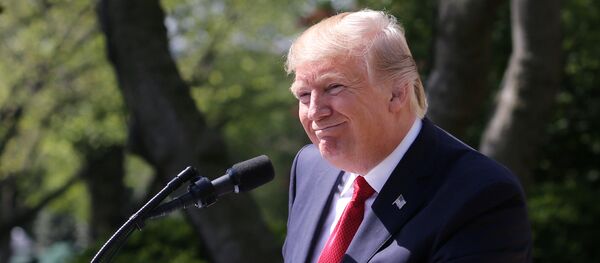Kristian Rouz – Despite the initial encouragement to business and consumer sentiment that accompanied Donald Trump’s election as US President in November, the US economic outlook has faded is the recent months due to the Federal Reserve’s tightening policies and a lack of effective White House fiscal stimulation.
The US economy grew a nominal 2.95 percent in 2016. While the US economic recovery of the past eight years was the slowest on the record, trade and budget deficits, lack of improvements in household incomes, and the threat of disinvestment in certain sectors of the economy have contributed to a heightened volatility in GDP growth projections.
The Federal Reserve has refrained from stimulating the economy in the past two years, and by hiking base interest rates and contemplating cuts to their bloated $4.5-trillion balance sheet, the US central bank is normalizing overall monetary conditions. Doing so reflects negatively on overall economic growth in an economy that is lacking longer-term sustainability driven by a foreign trade surplus, robust manufacturing, or high labor productivity.
The Fed shifts gears on policy ahead of the White House’s planned fiscal stimulus, but with delays on the fiscal side, and slow progress on deregulation and the refurbishment of foreign trade and customs tariffs, US growth might slow further in the near-term.
President Trump tweeted last week that US macroeconomic fundamentals have posted improvements.
Really great numbers on jobs & the economy! Things are starting to kick in now, and we have just begun! Don't like steel & aluminum dumping!
— Donald J. Trump (@realDonaldTrump) July 3, 2017
However, labor market figures and a gradual recovery in domestic manufacturing represent only part of the broader picture.
The US economy is facing several major challenges, which include, but are not limited to: slowing demand for credit, a decline in federal tax receipts, a flattening Treasury yield curve, and spillovers of policy incoherency, which is briefly partially outlined above.
Demand for credit has indeed slowed due to higher Fed and commercial lender rates, as well as the already high volume of household indebtedness, with credit card debt having topped $1 trln, and auto loans and student loan going above the $1-trillion mark as well. According to data from Mauldin Economics, demand for credit card products dropped into negative territory in early 2017, having contracted by 10 percent by that point after growth of almost 15 percent last year. Auto loans posted a 10-percent contraction in demand this year as well, after a 20-percent expansion in 2016.
Low household incomes are restraining gains in the consumer debt market, and the Federal Reserve’s efforts to boost labor participation in the tightening job market have hardly contributed to any improvements. With borrowing costs going up and purchasing power holding flat or falling, demand for credit is poised to decline further, which might slash some percentage points off US GDP growth.
Federal tax receipts dropped by 15 percent in early 2017, according to data from the US Department of the Treasury, whereas in 2011 they increased by 60 percent due to monetary stimulus and high government borrowing and spending. A decline in federal tax receipts is a signal of a looming recession as it reflects the decline in corporate earnings.
Lower taxes will contribute to an expansion of the tax base over the medium-term amid the lack of monetary stimulus, but the White House has yet to coordinate their policies to make it happen.
Finally, the flattening Treasury yield curve reflects the threat of disinvestment in US productive forces. The yield curve is the difference between yields on longer-term and shorter-term government bonds, and the flatter it is, the greater investor demand for longer-term debt there is. This means, as investors are fleeing for safety, capital outflow in safe havens drains business spending and reinvestment in effective production and output.
Higher government spending could encourage business investment in the Main Street economy, but, again, without a decisive and coherent set of White House policies, investors would prefer buying 30-year US Treasuries and gold rather than investing in new processing facilities and assembly lines.
In the light of these developments, US economic growth projections have become increasingly pessimistic. According to the Federal Reserve Bank of Atlanta’s GDPNow forecasting tool, the US GDP will expand by 2.7 percent in 2Q17, whilst Federal Reserve Bank of New York expects growth to slow to 1.9 percent in the second quarter and to 1.6 percent in the current, third, quarter of the year.





